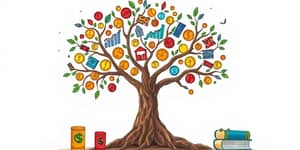Financial independence represents a profound milestone—a moment when you hold the reins of your life decisions without monetary constraints. Recognizing this achievement requires both practical benchmarks and emotional clarity.
Defining Your Personal Freedom
At its core, financial independence means having enough resources to cover all expenses without relying on active employment. It’s not merely about a number in your bank account, but about the freedom to choose your lifestyle without anxiety. When your investments, rental income, dividends, or pensions consistently meet or exceed your living costs, you can consider yourself financially independent.
This state brings the power to retire early, start a passion project, travel indefinitely, or simply savor daily life without the looming pressure of a paycheck.
Types and Levels of Financial Independence
Financial independence is not one-size-fits-all. It spans a spectrum from minimal to abundant freedom, shaped by individual goals and comfort levels.
- Lean FIRE: Covers only essential living costs through frugal habits, no luxuries.
- Coast FIRE: Investments will grow to fund retirement; work covers current needs.
- Fat FIRE: A high-discretion lifestyle with a significant financial cushion.
- Level 1: Basic FI—meets minimal expenses.
- Level 2: Comfortable FI—allows modest discretionary spending.
- Level 3: Abundant FI—supports luxury, philanthropy, or expansive pursuits.
Measuring Your Path: Calculations and Benchmarks
Quantifying financial independence relies on simple formulas. The most popular is the 4% safe withdrawal rule. Multiply your annual expenses by 25 to estimate the portfolio size needed to sustain your lifestyle indefinitely.
Alternatively, compare your current net worth to the product of remaining working years and annual expenses. If you meet or exceed that threshold, you have effectively secured your future needs.
Signs You Have Crossed the Threshold
Recognizing financial independence goes beyond spreadsheets. Consider these real-world indicators:
Financial Indicators: Your passive income streams—dividends, rental yields, interest—regularly cover all fixed and discretionary spending. Debts are paid off or comfortably managed, and an emergency fund cushions unexpected costs.
Lifestyle Indicators: You feel no compulsion to work for income. Career choices, relocations, volunteer opportunities, or creative ventures become driven by passion, not paychecks.
Psychological Indicators: You awaken without money worries. Unexpected expenses spark confidence rather than panic. Financial decisions feel strategic, not stress-induced.
Steps to Reach and Confirm Financial Independence
While the destination is inspiring, the journey demands a plan. Follow a roadmap of deliberate actions to mark your progress.
- Set clear savings and investment targets aligned with your FI number.
- Continuously track net worth, passive income, and expense coverage ratios.
- Reduce lifestyle inflation by reviewing and cutting unnecessary expenses.
- Diversify income through real estate, dividend stocks, royalties, or side businesses.
- Update your calculations for inflation, life changes, and evolving goals.
- Build psychological confidence by visualizing life choices without financial stress.
Overcoming Challenges and Embracing Confidence
Even with numbers on your side, doubts can arise. It’s common to fear market downturns, rising healthcare costs, or unexpected life events. To overcome these obstacles:
• Develop a resilient mindset: Accept market cycles and plan for volatility with a safety margin.
• Maintain a robust emergency fund: Keep at least six to twelve months of expenses in liquid assets.
• Stay informed and adaptable: Review your portfolio and expense projections annually, adjusting for new priorities.
By combining sound financial planning with emotional readiness, you solidify both the reality and the feeling of independence.
Building a Future of Empowerment
Financial independence is not a final destination but a launching pad. With your basic needs covered, you can:
• Channel energy into creative pursuits or entrepreneurship.
• Dedicate time and resources to causes you believe in.
• Cultivate relationships, personal growth, and health without compromise.
This stage of life offers the rare gift of choice. Whether you travel the world, mentor others, or simply savor each morning’s coffee, you do so by design rather than necessity.
Checklist: Signs You’ve Achieved FI
- Passive and investment income covers all living costs
- Your net worth equals or exceeds 25× annual expenses
- Debt obligations are minimal or fully eliminated
- Work becomes optional rather than required
- You can say “no” to roles or offers for purely financial reasons
- Financial accounts and bills are independently managed
- You remain calm when facing unplanned expenses
- Your focus shifts from earning to choosing how to live
Reaching financial independence is both measurable and deeply personal. By combining rigorous calculations with introspection and adaptability, you can celebrate not only the numbers in your portfolio but also the unwavering confidence that you’ve crafted a life on your own terms.
References
- https://en.wikipedia.org/wiki/Financial_independence
- https://www.aafmaa.com/learning-hub/blog/post/9639/what-does-it-mean-to-be-financially-independent
- https://goodegginvestments.com/blog/financial-freedom-vs-independence/
- https://mdwmllc.com/blog/how-to-calculate-financial-independence
- https://www.financialsamurai.com/three-levels-of-financial-independence/
- https://ifamagazine.com/more-than-half-of-women-feel-financially-independent-but-one-in-ten-do-not-have-the-financial-security-to-make-their-own-life-decisions-fidelity-international/
- https://bettermoneyhabits.bankofamerica.com/en/saving-budgeting/how-to-become-financially-independent
- https://sagemintwealth.com/financial-independence-what-does-it-mean-and-how-can-you-achieve-it/










